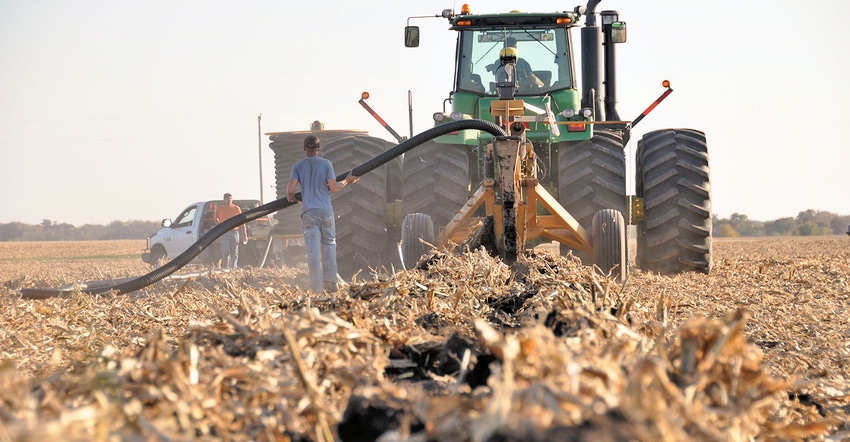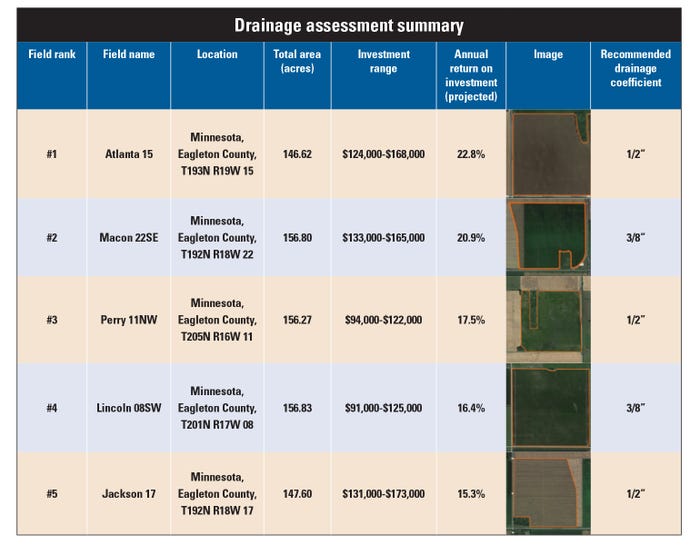January 1, 2018

The concept of tiling has grown immensely with the widespread use of the harvest yield map. But are you making the right tiling decisions on your fields? One Minnesota company has turned 50-plus years of tiling experience into a new program that brings data, agronomy and experience into a single decision-making tool.
Called Element, the new service was created by Ellingson Cos., West Concord, Minn. "We've created a new offering that helps farmers get the most out of their tile decisions," said Jason Gillard, vice president of operations. "We're working to bring agronomy to that decision."
And that's the challenge. Any field with a drainage issue may see a yield increase by laying a few lines, but are you picking the right field? Is it the right tile design? And how do you decide?
Gillard says his company found through its work on tiling, that often the decision was based on someone with a plow and a wet spot. And drainage design should actually be a little more detailed than that.
That's what led to the creation of Element, an analysis service that takes field soil and weather data, and combines it with crop rotation, drainage theory and an extensive background in tile design to provide tile installation guidance and analysis. "You might have someone who just lays lines on 50-foot centers, no matter what," he says. "But that field may see a better ROI with lines on 80-foot centers. That's a 40% savings on the tile investment to get the same result."
That's what Element allows, by taking soil, weather and crop rotation data on a field-by-field basis to create return-on-investment maps. "The key is matching the site-specific soil drainage information with tiling needs and developing a quantitative approach to the issue," Gillard says.
How it works
Analyzing drainage in this way can be an eye opener for a farmer, Gillard says. In work the company has done in developing this new tool, the most obvious field for tiling — the one with wet spots — doesn't always offer the highest return on investment.
"There are other factors like soil type and crop rotation that can have a significant influence on ROI," he says. "So a top-yielding field that doesn't appear to have much of a drainage problem might still return a higher ROI than a wetter field. Operation-specific crop rotations are so important to include in the analysis because the value of the crops and their susceptibility to water saturation can prove, in certain cases, to be the most important factor when determining design parameters."
The Element process starts by farmers identifying the fields for analysis and their respective crop rotation. The Ellingson team then pulls field maps from available public resources that also include soil map information; they also gather site-specific weather data and other details for that field. This is all done remotely, but from that information the company can develop and analyze that field's drainage profile to determine the recommended drainage coefficient.
The Ellingson team uses this drainage coefficient to forecast the cost for tile installation and yield response, and then calculates projected return on investment for the fields analyzed. This information is summarized into a report along with the supporting details to provide the farmer with more informed, quantitative decision-making information. The table below shows how a report might look from a sample farm.
 In this analysis of fields by Element, the farmer gets a report on the installation estimate and a return on investment for each field. This brings a more agronomy-based approach to drainage decisions on the farm.
In this analysis of fields by Element, the farmer gets a report on the installation estimate and a return on investment for each field. This brings a more agronomy-based approach to drainage decisions on the farm.

"Once they use the report to make the decision to invest in drainage, they can enlist us to develop the drainage design for that farm," Gillard says. "That's when our engineering team takes the detailed topography and site-specific requirements, along with the Element report, to develop the tile design and installation documents. At that point the farmer has two options: take the plan and have their tile installer do the work, or engage Ellingson to facilitate the installation." Element is a solid example of how companies are turning data into actionable tools farmers can use to maximize returns for the future. You can learn more by visiting elementwater.design and ellingsoncompanies.com.
About the Author(s)
You May Also Like






